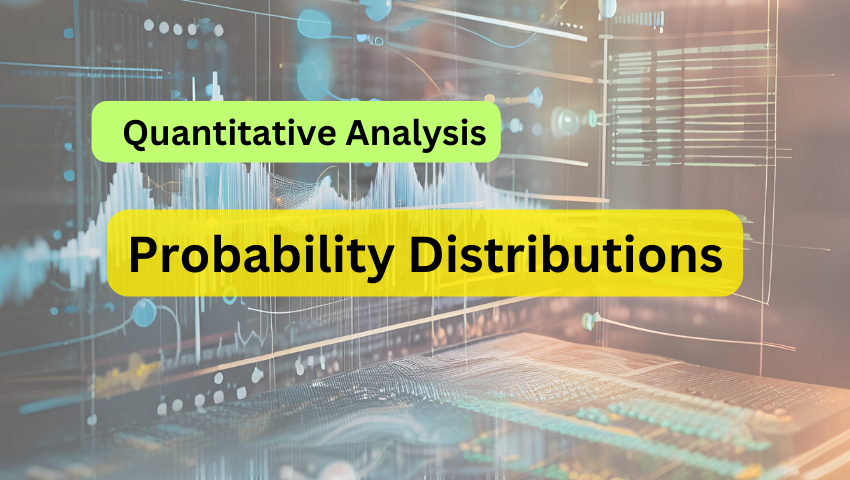
Introduction
Probability distributions form the backbone of quantitative analysis. They offer a mathematical framework to quantify the likelihood of various outcomes across different scenarios. Mastering these distributions is vital for making informed decisions in fields such as finance, engineering, healthcare, and social sciences. This guide delves into four crucial probability distributions: Normal, Binomial, Poisson, and Exponential, and highlights their applications in quantitative analysis.
Understanding Probability Distributions
Probability distributions are mathematical functions that describe the probabilities of various outcomes for a random variable. These distributions provide valuable insights into data spread and shape, helping analysts and researchers navigate uncertainty and variability in datasets. Each distribution has unique parameters and characteristics that define its behavior.
Normal Distribution
Grasping the Normal Distribution
The Normal distribution, also known as the Gaussian distribution, is the most widely recognized distribution in statistics. It is depicted by a symmetric bell-shaped curve centered around its mean.
The formula for the probability density function (PDF) of the Normal distribution is:
Mean (μ): Determines the center of the distribution.
The Empirical Rule (68-95-99.7 Rule):
Calculating Probabilities with the Normal Distribution
To calculate probabilities, we use the Z-score, which indicates how many standard deviations an element is from the mean.
Cumulative Distribution Function (CDF):
The CDF provides the probability that a random variable 𝑋 will take a value less than or equal to 𝑥 .
Examples and Applications
Binomial Distribution
Understanding the Binomial Distribution
The Binomial distribution models the number of successes in a fixed number of independent Bernoulli trials, each with the same probability of success.
The probability mass function (PMF) of the Binomial distribution is:
Characteristics and Parameters
Calculating Binomial Probabilities
Binomial coefficient:
Cumulative Distribution Function (CDF):
𝐹(𝑘;𝑛,𝑝)=∑𝑖=0𝑘(𝑛𝑖)𝑝𝑖(1−𝑝)𝑛−𝑖
Examples and Applications
Poisson Distribution
Grasping the Poisson Distribution
The Poisson distribution expresses the probability of a given number of events occurring within a fixed interval of time or space.
The probability mass function (PMF) of the Poisson distribution is:
𝑃(𝑋=𝑘)=𝜆𝑘𝑒−𝜆𝑘!
Characteristics and Parameters
Calculating Poisson Probabilities
Cumulative Distribution Function (CDF):
Examples and Applications
Exponential Distribution
Understanding the Exponential Distribution
The Exponential distribution describes the time between events in a Poisson process, where events occur continuously and independently at a constant average rate.
Characteristics and Parameters
Probability Density Function (PDF):
𝑓(𝑥;𝜆)=𝜆𝑒−𝜆𝑥
Calculating Exponential Probabilities
Cumulative Distribution Function (CDF):
𝐹(𝑥;𝜆)=1−𝑒−𝜆𝑥
Examples and Applications
Conclusion
Grasping the concepts of probability distributions—specifically the Normal, Binomial, Poisson, and Exponential distributions—is essential for anyone involved in quantitative analysis and statistical methods. Each distribution serves unique purposes and finds applications across various fields, making them indispensable tools in statistical analysis.